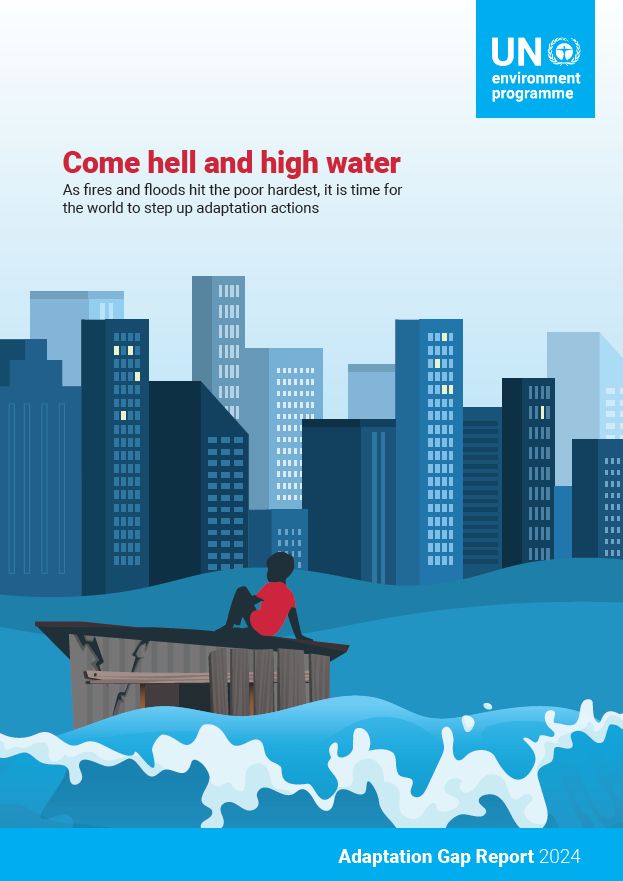Global progress on adaptation implementation (Chapter in UNEP’s Adaptation Gap Report 2024)

Where do we stand globally on climate change adaptation? UNEP’s Adaptation Gap Report (AGR) provides a detailed account of adaptation planning, finance and implementation. Since its inception in 2020, the implementation chapter of the AGR has provided an overview of implemented adaptation action worldwide, using various data sources of global and intercontinental coverage. In the 2024 AGR, three new data sources offer novel insights into key aspects of adaptation progress, notably, the outcomes and sustainability of adaptation projects, the degree of implementation of national adaptation plans (NAPs), and the extent of subnational adaptation actions as demonstrated in self-reported urban adaptation – see the key messages below.
The Adaptation Gap Report was launched on 7 November 2024 with a video message from the UN Secretary General. The Grantham Research Institute has been an important contributor to the Adaptation Gap Report. Since 2020, Timo Leiter has been the lead author of the chapter ‘Global progress on adaptation implementation’.
Leiter, T., Njuguna, L., Singh, C., Bours, D., Vyas, D. (2024). Global progress on adaptation implementation. Chapter 3 in: UNEP (Eds.). Adaptation Gap Report 2024: Come hell and high water, pp.25-39. Nairobi, Kenya.
Key messages
- The number of new adaptation projects and their annual funding volume under the Adaptation Fund, the Green Climate Fund (GCF) and the Global Environment Facility (GEF) do not keep pace with increasing climate impacts. Instead of growing, the grant-based funding volume for adaptation projects under these three funds has remained the same for over five years at just below US$500 million per year.
- Evaluations of 168 completed adaptation projects under the Adaptation Fund, GCF and GEF found that about 40 per cent of the projects were rated as satisfactory on their outcomes, and a similar proportion as moderately satisfactory. Just over half were rated moderately likely or likely for its outcomes to be sustained beyond the project’s lifetime. This demonstrates a continued need to improve the design and modalities of adaptation projects, while also confirming that achieving lasting adaptation outcomes poses challenges.
- National adaptation planning instruments are partially implemented, but gaps and barriers remain. Countries in the early stages of national adaptation plan (NAP) implementation have low completion rates, while countries that are more than four years into their NAP implementation are reporting significant progress on implementation, albeit with limited data on its outcomes.
- To date, only five countries have assessed the overall depth and breadth of their NAP implementation. Each of them finds that the scale and speed at which adaptation is happening is inadequate relative to the extent of climatic risks.
- Almost 3,500 adaptation actions by ca. 500 city governments were reported in 2023, but consistent and robust information on their outcomes is lacking. Engineered and built environment adaptation actions and ecosystem-based adaptation are the most frequently reported actions, accounting for 32 and 20 per cent respectively, with regional differences. The most commonly perceived co-benefits of urban adaptation are on human health and on ecosystem services.

